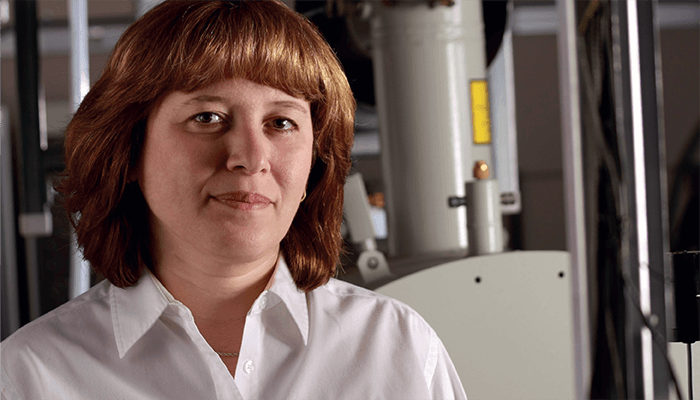
How has COVID-19 impacted your life and work?
Purdue University was closed for about three months in the spring of 2020, during which time my group members worked from home. Isolation was a big challenge for all of us. It affected group dynamics, mental health, and overall drive. First-year graduate students – those who didn’t have enough training prior to the shutdown nor much data to work with – were impacted the most. Towards the end of June of 2020, we were allowed to return to the labs with limited capacity. And in September 2021, we attended our first in-person conference after 18 months of remote seminars and very limited networking opportunities. For most of the graduate students, it was their first in-person conference and everybody was excited to have the chance for face-to-face interactions and scientific exchange.
I’d say teaching during COVID was by far the most challenging and time-consuming task. In the fall of 2020, I was teaching a new course with four of my graduate students as teaching assistants. We prepared materials for teaching in the hybrid environment, developed several new laboratory experiments, developed laboratory materials for students who were quarantined, and handled a discussion board that was monitored seven days a week. It was a tremendous effort, and I am grateful to my graduate students – it would not have been possible without their support.
Though we are almost back to “normal” now, a few things persist. Our group meetings still take place via Zoom and many of my group members work from home on a regular basis – they have learned how to be productive and engaged under these circumstances. However, online interactions are not a good replacement for “the real deal.” In the past six months, we have been lucky enough to attend several in-person conferences – and this has been such a great boost to the group’s morale.
From a scientific perspective, what have we missed?
Despite the setbacks, our group has been very productive. In the past 18 months, we have developed a new ion soft landing instrument and used it to characterize the structures and redox properties of several types of nanoclusters of interest to energy production and storage applications. We have also conducted the first experiments focused on understanding and controlling the reactivity of fragment ions on surfaces, providing a path to designing new cluster-based materials with interesting properties. We have worked on isomer-selective imaging of lipids using photochemical approaches and ion mobility separation. We have developed a robust microfluidic chip for imaging of biomolecules in tissues using mass spectrometry and obtained the first proteoform-selective imaging data. Furthermore, our work to enhance the sensitivity of nanospray desorption electrospray ionization (nano-DESI) imaging shows great promise for future experiments. In fact, though I cannot possibly go into all the details, we will be presenting four talks and twelve posters at the ASMS Conference in Minneapolis. The energy in the group is truly impressive and we are excited to share what we’ve been working on with everyone at the conference!
Is there light at the end of the tunnel?
I think, as a field, we will benefit from many things we learned during the pandemic. We became more flexible in the way we conduct research and teach. Most of us have gained new skills, such as learning how to code and performing simulations we did not have time to explore before. We spent more time reading literature. We learned how to manage our time and stay focused while working remotely. And we transitioned some of the meetings that do not require in-person attendance to virtual platforms. At the same time, we learned about the many limitations of virtual conferences and meetings. I believe that we all have better survival skills and a deeper appreciation of the opportunities in front of us.




